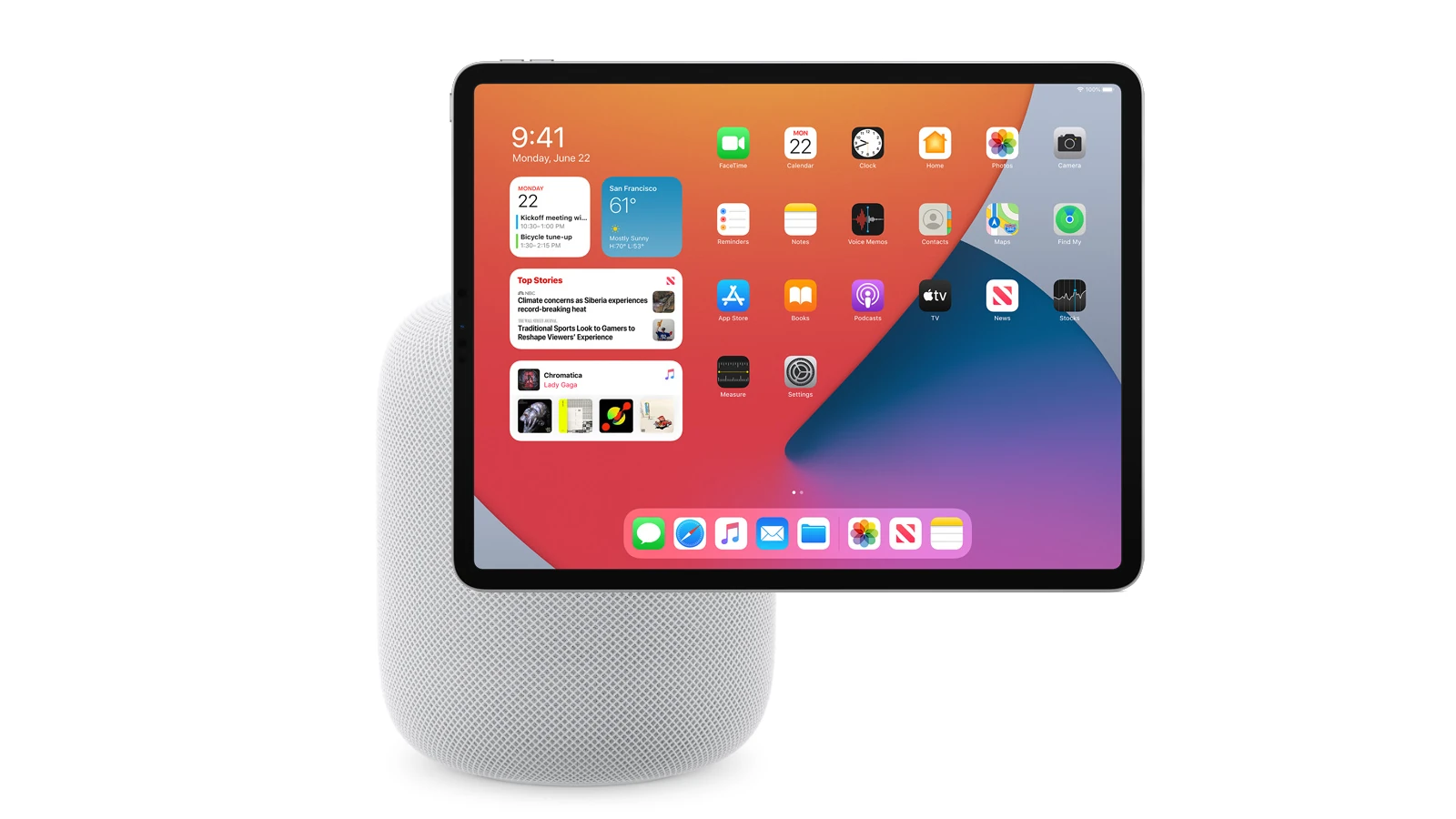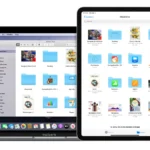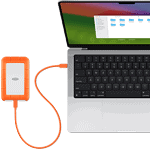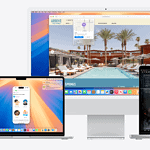Apple is set to make a significant impact on the smart home market with its 2025 lineup of devices, particularly a wall-mounted smart home display designed to improve user interaction. This display will include Siri integration, Apple Intelligence, and the App Intents system, positioning it as a formidable competitor in a rapidly evolving market.
The global smart home market, which is currently valued at approximately $150 billion, is expected to surpass $300 billion by 2028. This growth is driven by increased Internet usage, the rising adoption of the Internet of Things (IoT), and consumer demand for convenience and security. As technology advances and becomes more affordable, the adoption of smart home devices is anticipated to accelerate.
Apple’s HomeKit Expansion: A New Era of Smart Living
Apple’s Focus on Home Security
Apple is making a big push into the smart home market, with a strong focus on home security. Reports suggest they are working on a full home security system. This may include smart locks with face ID, better doorbells, and even robots using AI. These products will likely work well with iPhones, iPads, and HomePods. This makes for a simple smart home setup. Apple is also known for its strong focus on user privacy. This could set them apart from other smart home brands.
What This Means for the Future of Smart Homes
Apple’s move into home security can change how we live. It could make homes safer and easier to manage. It will also make other smart home companies work harder to make better products. We can expect HomeKit, Apple’s smart home platform, to get much better. This means more features and easier use.
No Current “Sequels” or “Spin-offs”
This news is about new hardware and software. It does not relate to a specific product line with sequels or spin-offs.
Expected Product Updates and New Features
While Apple has not said much, many signs point to new products soon. We might see them in the next few years. There are also rumors of an AI hub for the home. This hub might have a screen and control all smart home devices. The HomePod may also get upgrades. These could include better sound and new smart home features. Some even say it might get a screen.
How Apple Stacks Up Against the Competition
Apple’s focus on privacy and seamless integration with its products could give it an edge. Let’s see how it compares to some key competitors:
| Feature | Apple HomeKit | Google Nest | Amazon Ring |
|---|---|---|---|
| Privacy Focus | High | Medium | Medium |
| Ecosystem Integration | Excellent (Apple devices) | Good (Google devices) | Good (Amazon devices) |
| Device Compatibility | Growing, but more limited | Wide range | Wide range |
| Security focus | Increasing | Established | Established |
What This Means for You
If you use Apple products, this news is good. You might soon have more ways to make your home smart and safe. If you use other brands, you might see better products from them too. This is because of the added competition from Apple.
Smart Lighting Options Within Apple’s Ecosystem
While home security is a big focus, smart lighting is also a key part of any smart home. Within the Apple ecosystem, several options exist. Philips Hue is a popular choice, offering a wide range of bulbs, fixtures, and accessories that integrate seamlessly with HomeKit. Nanoleaf’s unique modular light panels also work with HomeKit, providing customizable and visually striking lighting solutions. These options allow users to control their lights with Siri voice commands, create automated lighting schedules, and adjust lighting scenes based on their preferences.
The smart home market is heating up. Apple’s entry could change the game. This means more choices and better products for everyone.
Short Summary:
- The new wall-mounted display is expected to serve as a central control hub for smart home devices.
- Integration with Apple Intelligence and advanced Siri functionality may provide unique advantages.
- Apple’s commitment to privacy and ecosystem integration could make it a compelling choice for consumers.
In a bold move to reclaim ground in the competitive smart home market, Apple is reportedly developing a sophisticated new product: a wall-mounted display designed to serve as a central hub for managing smart appliances and technologies. This new device is expected to augment the capabilities of Apple’s voice assistant, Siri, empowering users to manipulate their home tech with unprecedented ease and efficiency.
A Glimpse into the Future
According to sources, the anticipated smart home display will feature a compact and appealing design, resembling a “square iPad.” With a 6-inch screen, the device is expected to be easily mounted on walls around the home, providing users with convenient access to home functionalities. Among the key features are a built-in camera for video calls, integrated speakers for audio playback, and a rechargeable battery that enhances its versatility.
“Apple’s new approach in the smart home segment represents an acknowledgment of the growing demand for integrated home technologies,” said a tech industry analyst.
This device aims to compete directly with leading players in the market, such as the Google Home Hub and Amazon’s Echo Show. Although these existing products have established a strong presence, industry experts believe that Apple can carve out its niche by leveraging its distinct ecosystem and innovative capabilities.
Siri and the Power of Apple Intelligence
A prominent aspect of the upcoming display will be its integration with Siri, Apple’s acclaimed voice assistant. As users become increasingly reliant on voice commands for daily tasks, the improved Siri is expected to facilitate a smoother interaction with the smart home environment. The recent rollout of Apple Intelligence, a next-generation AI framework, plays a significant role in this potential evolution.
Apple Intelligence aims to enhance Siri’s contextual awareness, allowing the assistant to better understand and anticipate user needs. This could mean not just executing commands but also initiating actions based on learned user preferences and habits. Such capabilities position Apple’s smart home display as a potentially superior option compared to its rivals.
“With Apple Intelligence, we are paving the way for an immersive smart home experience where technology seamlessly adapts to your lifestyle,” stated a senior Apple product designer.
The App Intents Feature: Revolutionizing Daily Routines
Another feature expected to make a significant impact is the App Intents system. This innovative technology will enable users to control various applications through AI-driven commands, simplifying their daily routines. For instance, a user might say, “Good morning,” triggering the smart display to light up, brew coffee, and play a favorite podcast—all in one seamless operation.
Such automation is likely to position Apple as a front-runner in the smart home sector, particularly against competitors whose devices require more manual input. The prospect of effortless, voice-driven automation responds to the desire for simplicity and connectivity in modern smart homes.
Navigating a Competitive Landscape
The imminent launch of Apple’s smart home display will occur in a highly competitive environment where established devices like the Google Home Hub and Echo Show dominate the market. Effective product differentiation will be crucial for Apple to succeed in this space.
To ensure that their smart home display resonates with consumers, Apple must deliver key differentiators in functionality, user interface, and compatibility. Elements such as robust Siri integration and the potential for high-level user interactions could distinguish Apple from its competitors.
The Future: Exciting Prospects with Robotics
A fascinating rumor suggesting that the new smart home display might also feature a robotic arm adds to the intrigue surrounding this product. If realized, this could allow the display to reposition itself, optimizing user interaction according to their needs. Although speculation remains regarding the initial release of such an advanced feature, its exploration reflects Apple’s commitment to innovation in the smart home arena.
“Apple is not just looking to enter the smart home market; they are aiming to redefine it,” a tech analyst remarked.
Leveraging an Integrated Ecosystem
One of Apple’s core advantages in the smart home market lies in its tightly integrated ecosystem. Users already engaged with Apple products such as the iPhone, iPad, and Apple Watch will likely find the smart home display to be a seamless extension of their existing technology. The envisioned ease of controlling smart devices from any Apple platform adds appeal for many loyal customers.
For example, one could check the status of the wall-mounted display or adjust settings from an iPhone or Apple Watch with remarkable ease. This level of integration not only enhances user experience but also encourages consumers to invest further into Apple’s product ecosystem.
Prioritizing Privacy and Security
Apple’s reputation for prioritizing user privacy and security could provide a vital competitive edge in the smart home landscape. With data security concerns mounting among consumers, an emphasis on secure transactions, including end-to-end encryption for video calls and other sensitive interactions, could make Apple’s smart home display an appealing choice. Privacy-conscious customers may well prefer a system that adheres to strict data protection policies, reinforcing Apple’s position as a trustworthy brand.
Looking Ahead: Apple’s Strategic Moves
The development of Apple’s smart home display is interpreted as part of a larger strategy to engage more actively with the smart home sector. With the imminent rollout targeted for March 2025, consumers and industry observers alike are eager for formal announcements and insights into the device’s capabilities.
In addition to the wall-mounted display, there are suggestions that Apple is also exploring other smart home devices such as a tabletop robot and a dedicated smart camera for home security. These products, anticipated to integrate seamlessly with Apple’s existing offerings, signify a robust commitment to expanding its presence in the smart home ecosystem.
“The upcoming series of smart home devices by Apple marks their most significant commitment to this sector since the HomePod debut,” said a tech industry expert.
The Impact of Matter on Smart Home Technology
The emergence of Matter, a new standard for smart home connectivity, stands to enhance the interoperability of devices across various platforms, bringing a new level of convenience and control. Apple’s entry into the smart home arena coincides with this standardization trend, significantly easing the challenges associated with combining products from different manufacturers. The integration of Matter could further position Apple’s offerings as appealing and practical solutions for both newcomers and seasoned smart home enthusiasts.
FAQs
What is the expected release date for Apple’s new smart home display?
Apple’s smart home display is anticipated to be unveiled as soon as March 2025, although this remains speculative.
How will this display differ from existing products like the Google Home Hub?
While it shares foundational functionalities, the smart home display will likely feature advanced Siri integration, Apple Intelligence, and the innovative App Intents system for potentially superior user experience.
Will the new smart home display support non-Apple devices?
Apple’s smart home display is expected to operate best within its ecosystem but will also likely support a variety of smart home devices from other manufacturers.
Can you explain what Apple Intelligence is?
Apple Intelligence is an AI-driven framework intended to enhance Siri’s ability to understand and predict user behaviors, delivering smarter and more context-aware interactions for home management.
What is the purpose of the App Intents feature?
App Intents allows users to utilize voice commands for controlling multiple applications, streamlining routines and enhancing smart home automation.
Is the smart home display expected to have video calling capabilities?
Yes, it is anticipated that the new display will include a camera for video calls, similar to other smart home devices like the Echo Show.







